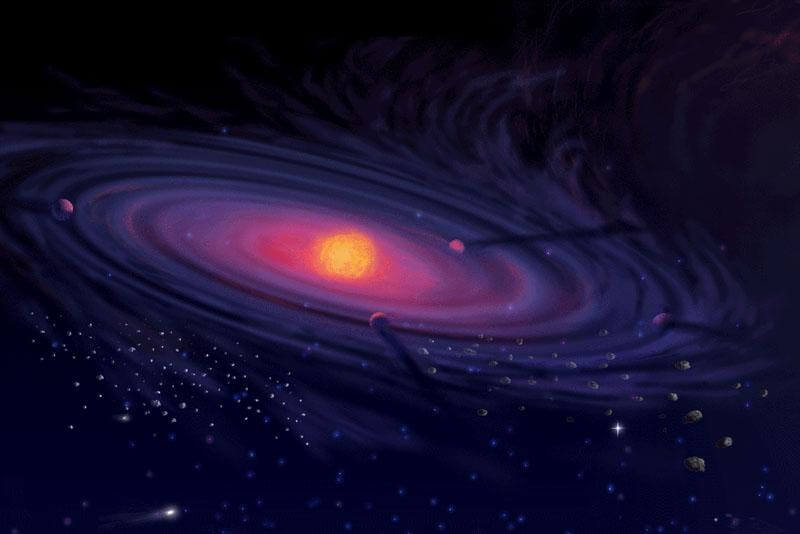"The pre-planetary accretion discs are very stable from a hydrodynamic point of view, when according to Kepler's laws of planetary motion the angular momentum increases from the center to the edges." Says Dr. Frank Stefani from HZDR. "To explain the growth rates of stars and black holes, there must be a mechanism that breaks this stability of the spinning disk and at the same time ensures that the mass reaches the center and the angular momentum reaches the edges."

How did the stars and black holes in the universe form from material swirling around itself? This is one of the great questions of astrophysics. What we do know is that magnetic fields come into play. However, according to our current knowledge, the magnetic field only works if the material is a good electrical conductor. However, in spinning discs, this is not always the case.
Now a publication by the Helmholtz Center in Dresden-Rossendorf (HZDR) for physics in the journal "Physical Review Letters" tries to solve the riddle - how compact objects are formed in the universe.
When Johannes Kepler first proposed his laws of planetary motion in the early 17th century he could not have foreseen the central role that cosmic magnetic fields would play in the formation of solar systems. Today we know that without the presence of a magnetic field, the mass cannot be concentrated in small bodies such as stars and black holes. A good example of this is our solar system which was formed 4.6 billion years ago through the collapse of a giant gas cloud, whose gravitational push concentrated the particles in the center, culminating in the creation of a large disk.
"These adsorption disks are very stable from a hydrodynamic point of view, when according to Kepler's laws of planetary motion the angular momentum increases from the center to the edges." Says Dr. Frank Stefani from HZDR. "To explain the growth rates of stars and black holes, there must be a mechanism that breaks this stability of the spinning disk and at the same time ensures that the mass reaches the center and the angular momentum reaches the edges."
In 1959 Yevgeny Volikhov proposed that the magnetic fields could help the development of eddies in a liquid in a state of swirling flow, but only in 1991
Steven Balves and John Hawley succeeded in making significant progress in the study of magneto-rotational instability (MRI) in the creation of cosmic structures. The two will receive the Shaw Prize for astronomy this year at a ceremony to be held in September 2013. However, to be sure that the MRI is indeed working, the disc must have a minimum level of electrical conductivity. In areas where the conductivity is low, such as in those 'dead zones' at the edge of the preplanetary disk or in the remote areas of the material disk surrounding black holes, it is difficult to numerically calculate the effect of the MRI and therefore the issue was subject to debate. HZDR scientists conducting MRI experiments in swirling fluids have now proposed a new theoretical explanation for this phenomenon.
Magnetic fields and swirling flow reinforce each other
The calculations of Dr. Oleg Kirilov and Dr. Frank Stefani showed that the helical vortices are produced not only from the outside in, but partly also inside the adsorption disk. A circular magnetic field works to destabilize the disk and as a result vortices are created that create components of horizontal magnetic fields. They in turn create back the spinning magnetic field due to the special shape of the spinning disk movement.
For the announcement of the researchers on the Helmholtz Institute website
